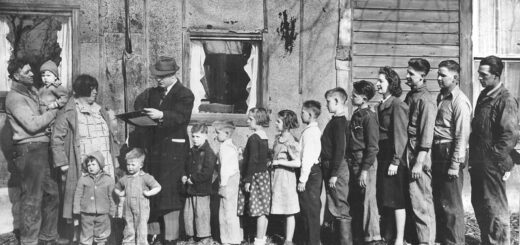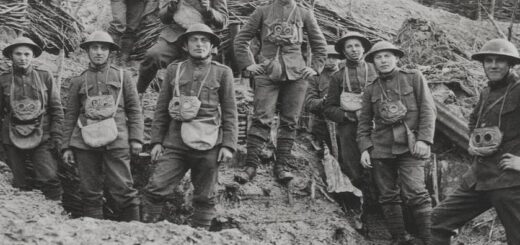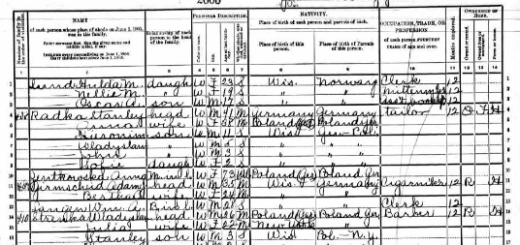Genealogy for Kids

Introducing kids to genealogy is a great way for them to learn more about history as well their family history. Genealogy is even being incorporated into some school curricula as way to connect kids to history. Children and teens who develop an interest in family history are more likely to participate in family history throughout their lives. And there’s also the element of FUN. Genealogy didn’t become the second most popular hobby in the U.S. by not being enjoyable! Kids, parents, grandparents, and other relatives getting involved can make this a fun and rewarding learning experience. Following are some ideas for activities that can help kids learn more about their family history.
Talk to living relatives, especially older ones. The stories older relatives have to tell about what life was like for them is a great way for kids to connect to the past. This activity can help bring generations together and create stronger family bonds. You’ll want to preserve those experiences by writing them down, or better, by recording them on audio and/or video. It’s also important that kids understand what’s appropriate to talk about in the company of older people, so this should be considered when you’re making a list of questions to ask them. Here are some ideas:
Where were you born and where did you grow up?
What was it like growing up there?
What do you remember about your parents, brothers, and sisters? About your grandparents?
What kinds of friends did you have?
What things did you do for fun when you were a child and a teenager?
What was school like for you?
What kind(s) of work did you do?
The list can be tailored to suit individual circumstances. The important thing is to record and document each experience.
Telling stories about the lives of your ancestors will make family history more interesting to kids than just giving them facts and dates. You can include interesting or unusual facts that can pique their interest. Doing this doesn’t require setting aside a specific time; you can do it during dinner, a trip to the store, or even as a part of getting ready for bed. As a genealogy librarian, let me share an example from a wonderful experience I had while talking about doing genealogy with a class of sixth graders. It’s well-known that history is boring to many kids because they “have to remember all these dates and stuff”, so I wasn’t surprised to see some hands go up when I asked the class if they thought studying history was uninteresting. Then I said, “OK. But suppose you learned that one of your relatives fought in the Civil War, and that someone in your family has a picture of him in his uniform that they can show you? What if you learned that a relative fought in the Revolutionary War and wrote about being at Valley Forge with George Washington? History might not be so boring after all!” I also talked about how important it is to talk to older family members first so their stories won’t be lost. I don’t know how many kids were receptive to my message, but afterward one girl came up and said that she had a great-grandfather who she was now going to talk to and write down his stories. I truly hope she did. Genealogy makes history profoundly personal.
Another great activity is sharing old photos and family heirlooms. Holding something that once belonged to an ancestor can be a powerful experience. Pictures and heirlooms make the past come alive, so keeping them around your house can help to remind kids of their heritage. Old photos can show them how clothing and hairstyles have changed over the years. Telling stories and histories about these items helps personalize the item and its owner.
Family reunions provide opportunities for kids to get to know relatives they might not otherwise meet and create long-lasting memories. These events can also provide opportunities to sit down and talk with one or more older relatives in one setting. You can establish kids’ connections with other relatives by helping them understand how they’re related to people they meet. For example, “This is your great-uncle Richard. He’s your grandma Sophie’s only brother.”
Family history field trips also get kids interested in genealogy and family history. These trips can be local or cross-country. Examples include visiting places where ancestors lived or worked, attending cultural festivals celebrating ethnic heritages, visiting old graveyards, attending military re-enactments and visiting re-created historical. Internet searching can help you locate events in your area or other areas you want to visit.
These are just a few ways to help kids develop and maintain an interest in genealogy and family history. Following are some great resources at Grapevine Public Library to help you come up with additional age-specific ideas.
FOR KIDS:
Susan Provost Beller, Roots for Kids: A Genealogy Guide for Young People. An introduction to genealogy provides instructions on how to use sources at home and online to do research at local, state, and national levels. For grades 4–8.
Bonnie Hinman, Basic Genealogy for Kids. Introduces the basic ideas behind genealogy, and provides suggestions for recording, researching, and sharing information about family history. For grades 3-6.
Susan H. Hubbs, Dig Up Your Roots and Find Your Branches: A Child’s Guide to Genealogy. A fun guidebook for children to help them uncover facts about their family history. Includes simple instructions, puzzles, charts, and ideas for Internet searches. For ages 4-8.
Amie Jane Leavitt, Design Your Family Tree. Introduces family histories and presents instructions on researching and creating a family tree. Approach is to look at family history as a puzzle and take on the role of a detective. For grades 3-6.
Caroline Leavitt, The Kids’ Family Tree Book. Explains why family histories are important and presents instructions on researching and creating a family tree. For ages 8-12.
Tamra Orr, How to Research Your Ancestry. Introduces genealogy, explaining how to gather, organize, and share information about family history. For grades 3-6.
Maureen A. Taylor, Through the Eyes of Our Ancestors. Discusses genealogy, the study of one’s family, examining how such an interest develops, how to get started, how to use family stories and keepsakes, where to get help, and the positive effects of such study. For grades 4-8.
Ira Wolfman, Climbing Your Family Tree: Online and Offline Genealogy for Kids by Ira Wolfman. This book covers all aspects of genealogy, including forms, interviews, documents, and Internet resources. For grades 5–9.
Ira Wolfman, Do People Grow on Family Trees? Genealogy for Kids and Other Beginners. A genealogical primer that includes activities, history, photographs, illustrations, and reminiscences. For ages 8-12.
FOR PARENTS, GRANDPARENTS, AND TEACHERS:
Karen Frisch, Creating Junior Genealogists: Tips and Activities for Family History Fun. Offers a mother lode of ideas that will help family historians infuse the next generation with an appreciation of their heritage, including how to use family activities, visits to historical sites and museums, scrapbooks, heirlooms – and much more – to captivate and create lasting memories for children.
Bee Bartron Koons, Teaching Genealogy to Young People. It can be a challenge for teachers to arouse students’ interest in genealogy, so the right approach is essential. This is a guide to offering genealogy curricula to kids 6th grade and up.
WEB SITES
Cyndi’s List – Kids, Teens & The Next Generation: https://cyndislist.com/kids





Recent Comments